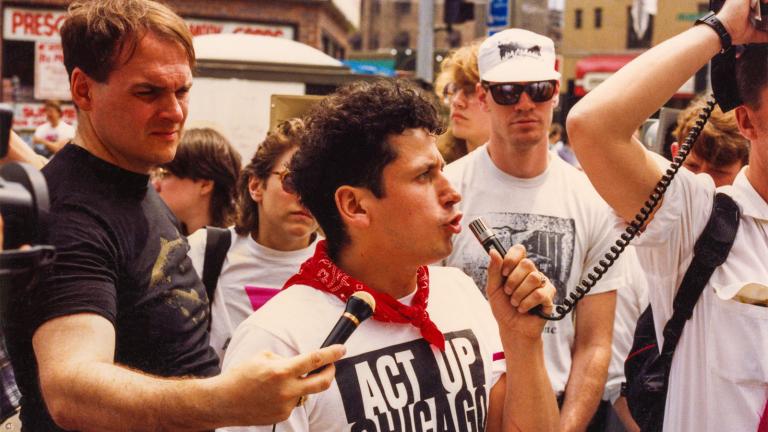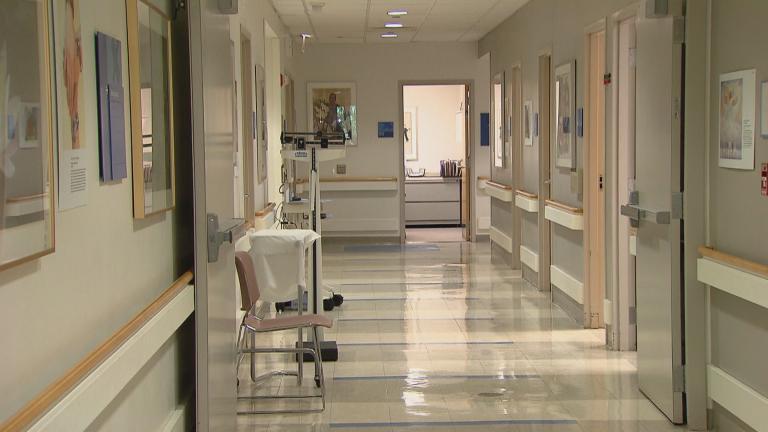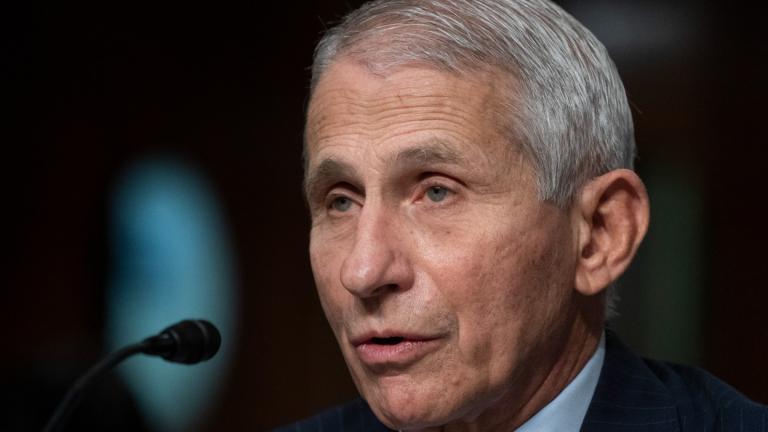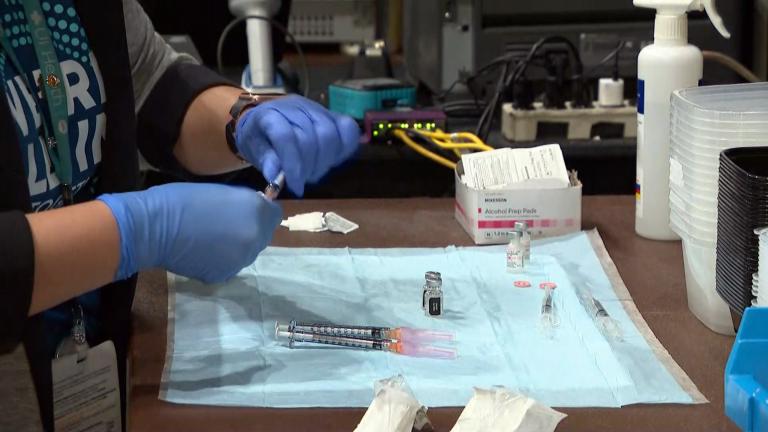It has been 40 years since the first cases of what’s now recognized as HIV/AIDS were reported, and according to HIV.gov, in that time more than 36 million people, including 700,000 in the U.S. have died.
Today, the AIDS Foundation of Chicago estimates that 45,000 people are living in Illinois with HIV or AIDS, 28,000 of whom reside in Chicago.
Back in ‘81, Dr. Cathy Creticos was graduating from medical school; a short time later she was an infectious disease fellow at University of Illinois Chicago, one of ten sites nationally and the only hospital in the Midwest, selected to study the antiviral drug AZT.
“To this day I remember my patients extremely well,” she said. “They all had a lot of challenges in their life and of course they were dealing with a deadly disease which they all eventually succumbed to. And it was really an opportunity for me to see how much a provider could do for a patient even if you couldn’t necessarily completely bring them back to full wellbeing.”
There was a woman in her ‘30s, a prominent banking executive who lived on Lake Shore Drive, who’d gotten it from a long-term partner — defying stereotypes of the time.
A man, also in his 30s, who kept a positive attitude even as he went blind and eventually died from an infection.
She then worked at Illinois Masonic Hospital, which had the area’s only AIDS ward.
“We had 35 beds that were dedicated just to HIV patients, and they were always full. So we would be staying late in the evening every day with these very challenging patients and deaths every day,” Creticos said.
But then: Drugs began to work. The rate of deaths decreased.
Today, she said she has worked with patients for 25, even 30 years who are doing fine.
When a newly positive patient comes in, she tells them their situation’s hopeful.
“We can restore them to health, we can give them almost a normal life expectancy, that they can have full relationships, they can have sexual relationships that are safe, they can have family – biological family,” Creticos said. “For example, I had a patient who both he and his wife were HIV positive, both are professionals and they have gone ahead to have children who are not infected. And what’s very interesting is that there’s nobody in their family who is aware of their status. And that’s fine because there’s no risk to the other family members.”
That’s largely thanks to drugs. If the virus is at levels so low, it’s virtually undetectable – often because it’s suppressed by medicine – someone with HIV cannot transmit it to a sexual partner or unborn child.
That does mean a sexual partner is depending on the infected person to take their pills, Creticos said; if that’s a concern, there are other drugs a partner can take to prevent contracting the virus.
Most insurance plans are now required to cover at no cost PrEP, or pre-exposure prophylaxis, a drug given to those at high risk of contracting AIDS as a means of prevention, though access issues remain.
In July, the governor signed House Bill 1063/Public Act 102-0168, which repeals a statute that made it a criminal violation if an HIV-positive individual failed to disclose that status prior to having unprotected sex. Advocates say the criminalization of HIV did not reduce transmissions but contributed to HIV-related stigma.
And Wednesday, city officials and leaders in the HIV/AIDS prevention and advocacy community previewed the AIDS garden, set to open this spring along the lakeshore just south of Belmont Ave.
The U.S. Department of Housing and Urban Development announced funding for housing for low-income persons living with HIV or AIDS.
Director of Housing at AIDS Foundation Chicago Brandi Calvert the award of $2.25 million will mean 40 new housing opportunities for people in the Chicago area.
“Without adequate housing, people are not able to focus on their health needs. Without a stable home you don’t have anywhere to store your medications,” Calvert said. “A good deal of people who end up homeless have some kind of medical event that preceded their homelessness. They may have worked at a point and then they got sick and weren’t able to keep their job and pay rent, and they become homeless. So that is a major factor. Without the housing you don’t even have a way to adequately apply for jobs. You don’t even have a base. Home is foundational for health – for HIV and other health conditions.”
Calvert said the majority of clients are in permanent supportive housing programs, which means they’re paired with a case worker.
“They ensure they understand what it means to be a good tenant, and make sure that their leases and other documents are up to date so that they can maintain housing. So a good deal of the people in our housing programs need that extra support to stay,” Calvert said.
Calvert said case managers assist with other aspects of life too, like ensuring a client has access to medical treatment and is going to the doctor as prescribed.
Going forward, the White House has a goal of ending AIDS as a health threat by 2030, the same year the statewide Getting to Zero Illinois initiative aims to reach zero new HIV transmissions and no individuals with HIV lacking access to medical care.
Dr. Creticos says it’s possible, but it will require more testing, access to care, and prevention.
Key to that is destigmatizing testing and having HIV.
“Stigma is preventing a lot of people from really getting what they need. So we need to really destigmatize it still. Forty years into this, we still have to do that,” Creticos said.
If you’re at a checkup and a doctor asks to test you for HIV, she said don’t be offended and think the physician is making presumptions about your lifestyle: Regular testing is a key part of prevention.
Follow Amanda Vinicky on Twitter: @AmandaVinicky







